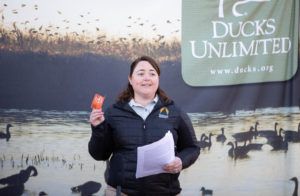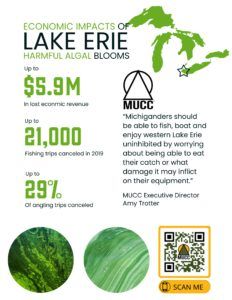Former fisheries biologist and advisor to the study Gary Towns said the study was based on anglers’ recollections of 2019 events when asked in early 2020.
“While it can be hard to recall or quantify what someone might have done, we are confident that HABs are significantly impacting Lake Erie, its fishery and the anglers who enjoy it,” Towns said. “Michigan’s portion of Lake Erie is a sliver; this issue’s ecological and economic detriments are vast.”
Towns said that roughly 9,000 to 21,000 trips were canceled in 2019 by anglers. This was determined using Michigan Department of Natural Resources (DNR) creel data.
Aesthetics of blooms also cause anglers or recreational boaters to avoid Lake Erie, its bait shops and gas stations.
Trotter said that changing agricultural practices contribute to the problem, as noted in the study, through nonpoint nutrient runoff, particularly phosphorus which is a limiting factor for algal blooms.
“Now that we have a better understanding of what algal blooms mean for fish, we can start to work with partners in all sectors to try and find solutions to this pollution,” Trotter said. “We owe it to Michiganders, the fish and wildlife and, most importantly, next generation to work together and make western Lake Erie a habitat for fishing, fun and recreation again.”
You can read the full report HERE.


